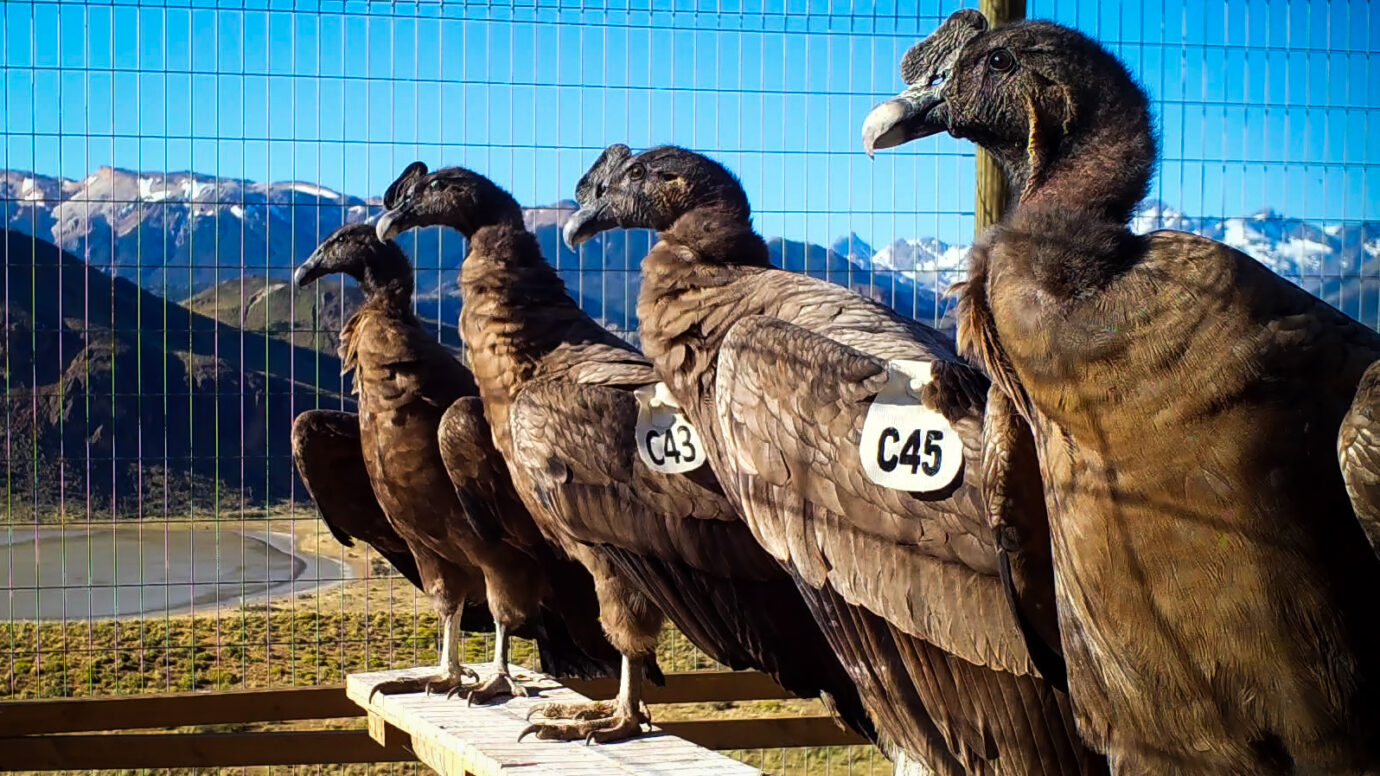
The four Andean condors released in Patagonia National Park | Photo: Rewilding Chile
Four Andean condors (Vultur gryphus) released in Patagonia National Park will give researchers visibility into the Patagonian population of the largest flying bird in the world. This latest rewilding effort is a public and private collaboration between the Manku Project, Cortés Solari Philanthropy, Rewilding Chile, Centro de Rehabilitación de Aves Rapaces (CRAR), the Chilean Agricultural Service (SAG), ParqueMet Zoo and Chile’s National Forest Corporation (CONAF).

The four Andean condors released in Patagonia National Park | Photo: Rewilding Chile
Patagonia is home to 75% of the Andean condors in Chile, a country where they are increasingly under threat from ingesting carrion contaminated with poison used to control predators of domestic livestock. The species faces a steep decline in central Chile, an area densely populated by humans. A symbol of Andean culture for millennia, the Andean condor has a 10-foot wingspan, and lives in large groups. Individuals can live for up to 70 years.
This release is part of a unique collaboration between multiple institutions taking part in a multi-year management and recovery process. Of wild origin, two-year-old “Bagual” and three-year-old “C44”, were rescued and subsequently rehabilitated at CRAR, while “Cuyén” and “Eclipse” were born in captivity at the same facility.
Restoring scavengers to their natural habitats is crucial to repairing ecosystems damaged by humans. In Chile, the country’s primary condor populations in the Central region and Patagonia are actively monitored. “Knowing their biology and the different situations faced by these two groups is fundamental to face the challenges of their conservation,” says Eduardo Pavez, director of the Manku Project.
For the director of wildlife at Rewilding Chile, Cristián Saucedo, “Releasing in the extreme south, where they still have abundant food sources, is very favorable for the condors. It also allows us, through satellite tracking, to study their behavior in one of the most pristine areas of the planet.”
The released condors carry satellite and radio transmitters to track their movements, integration with wild groups, and detect threats that may require intervention. The data will eventually allow researchers to identify flight paths, feeding sectors and breeding grounds key to the long-term survival of the species.
Prior to their release, the condors underwent a two-month acclimatization process in Patagonia National Park under the supervision of Rewilding Chile, the offspring of Tompkins Conservation, the organization whose land donation led to the creation of Patagonia National Park in 2018.
"Releasing in the extreme south, where they still have abundant food sources, is very favorable for the condors. It also allows us, through satellite tracking, to study their behavior in one of the most pristine areas of the planet.”